

Discover more from My Gaia
Mid-summer, yellow flowers start dominating the grassy field. But then Prairie Blazing Star shoots up sizzling rose-purple shafts of color, like big fuzzy light sabers, and steals the show.
Each plant makes a single spike of flowers. And there is a world of detail in that spike. Look closer.
A spike of flowers is composed of small tufts (called flowerheads), each less than half an inch wide. The topmost flowerheads come into blossom first, and the bloom progresses down the stalk like a huge burning stick of incense.
The flowerhead
The flowerheads are arranged in subtle spirals along the stem.
Looking even closer… Each flowerhead is made up of several miniature individual flowers (called florets). The four to ten florets in a flowerhead are rather tightly bound together, like a bouquet.
The floret
Each floret is a complete flower. The floret is starlike, with five lavender petals.
From the center of a floret, two lavender threads curl out into the air. The threads (called styles) are female reproductive structures. They catch pollen brought to the flower by insects.
From a distance, the mass of styles gives Prairie Blazing Star its fuzzy appearance.
When the style first emerges, it is single and covered with pollen. As the style reaches outward, the pollen is carried away by insects. Gradually the style separates into a double structure, which by then extends far beyond the petals.
Bees, butterflies, and hummingbirds visit Prairie Blazing Star for nectar. This is how the flower gets pollinated.
A good garden plant
Prairie Blazing Star is a perennial wildflower, native to the prairies of midwest North America.
It is also a spectacular addition to a sunny flower garden, easy to grow from started plants or seeds. It grows 4-5 feet tall and takes up little elbow room.
But a warning… you will have to put up with hummingbirds.




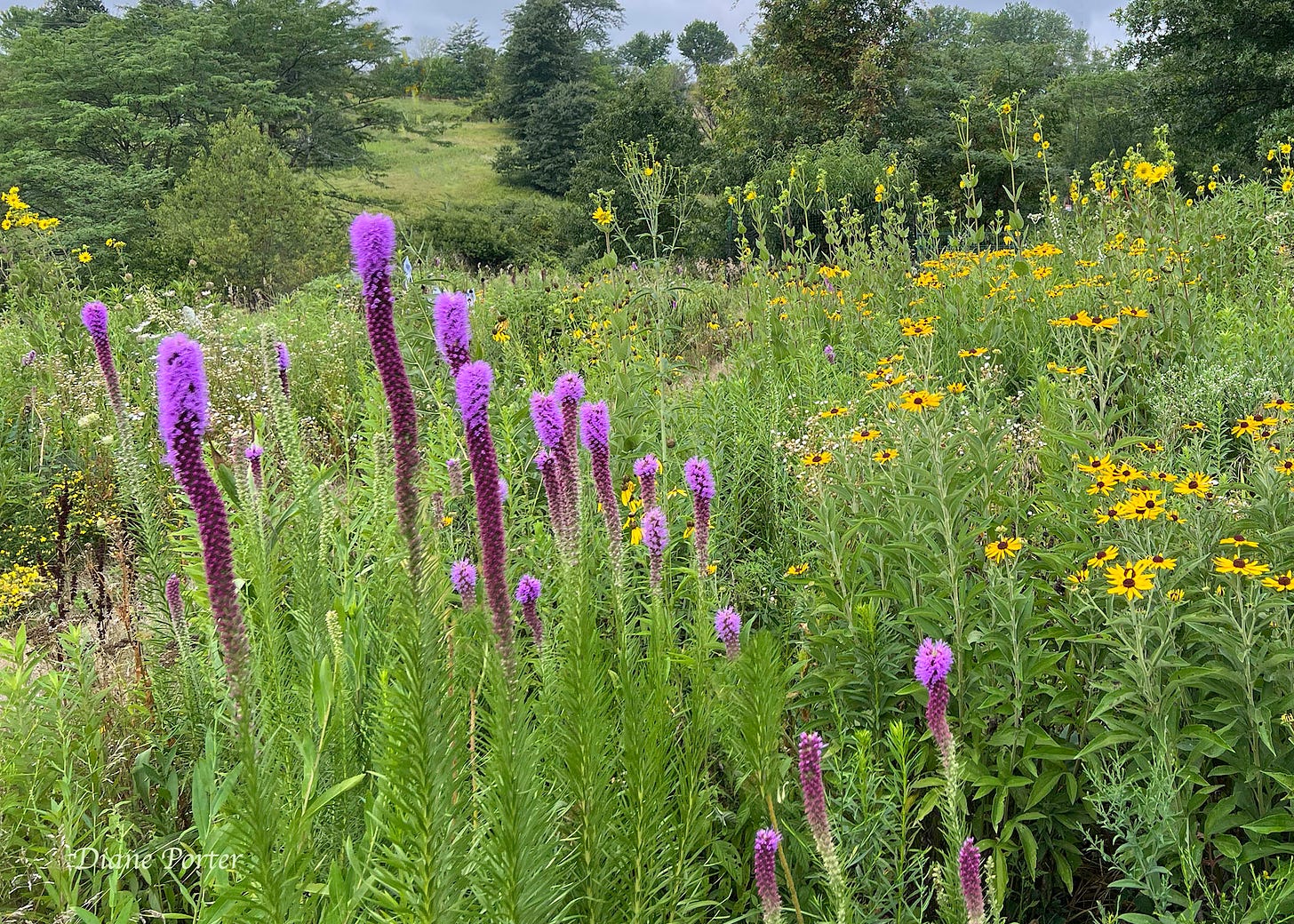
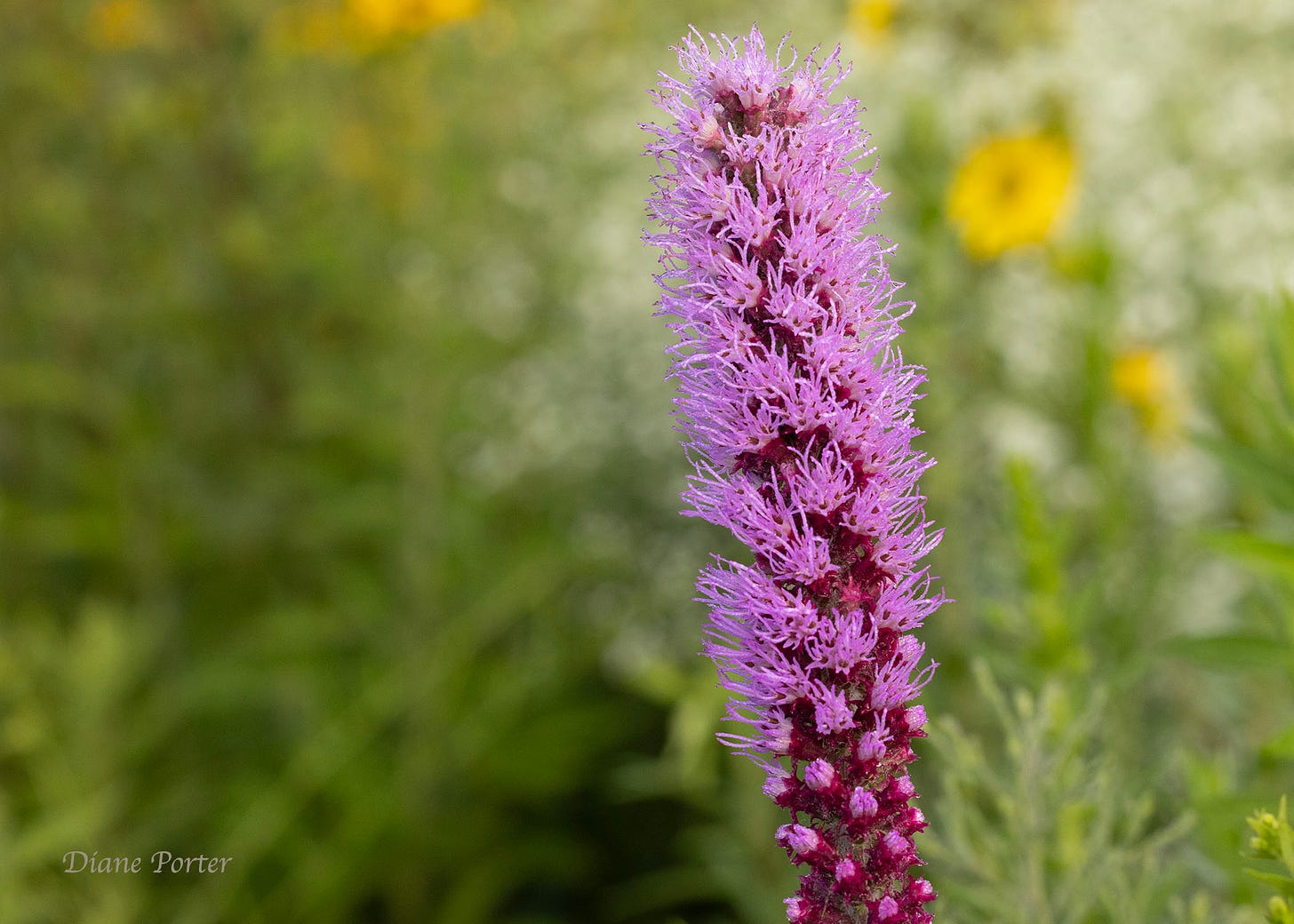
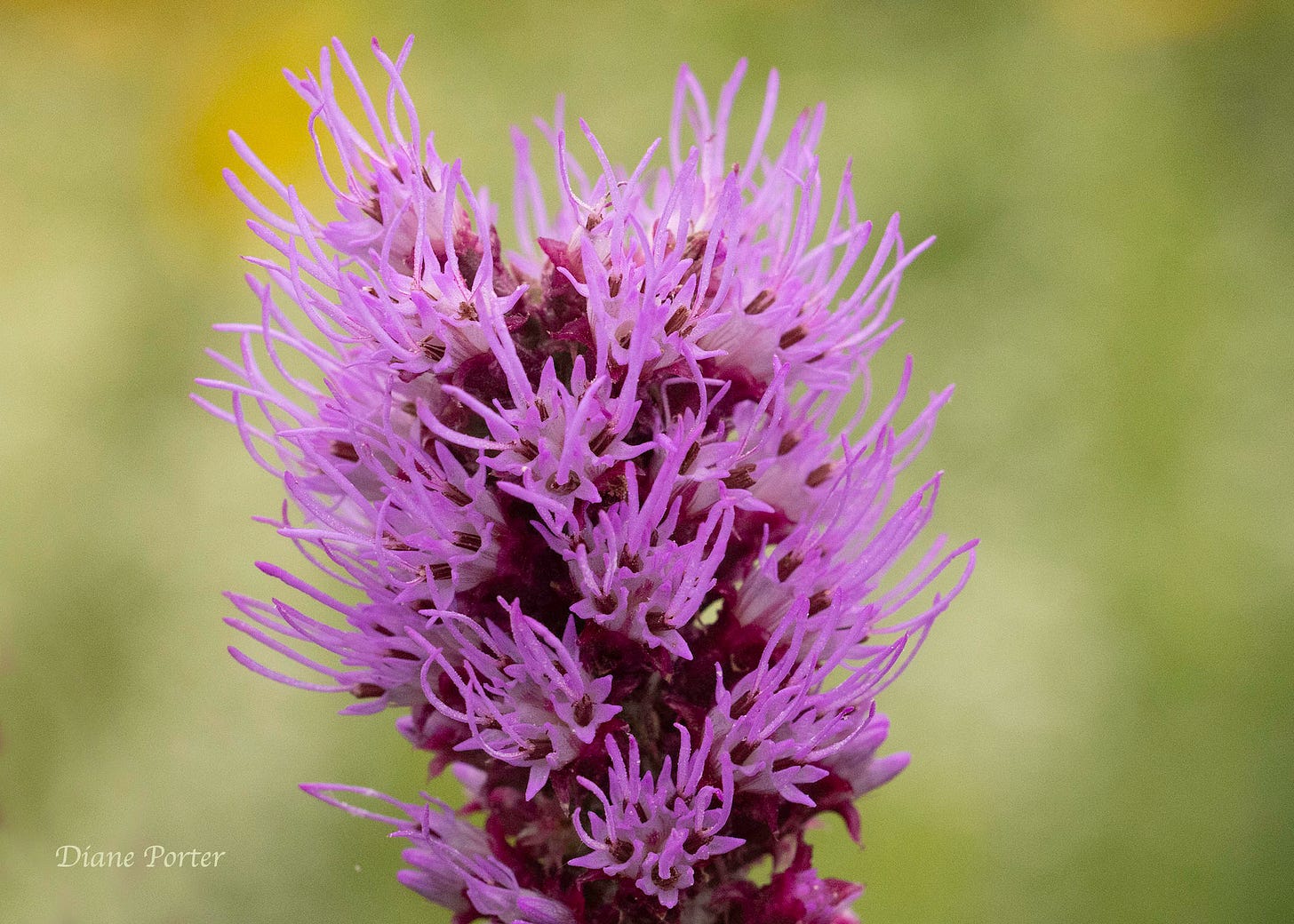
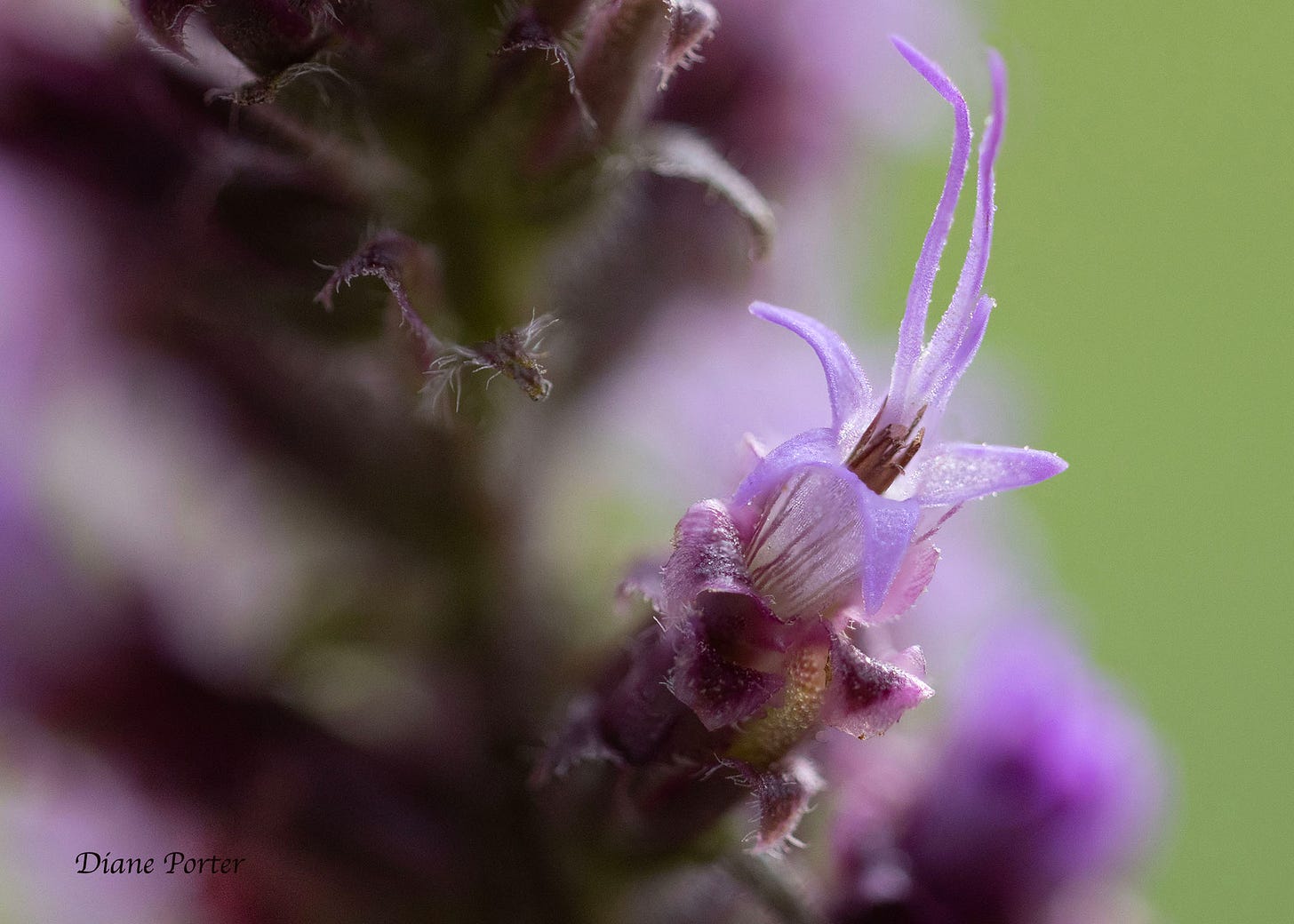
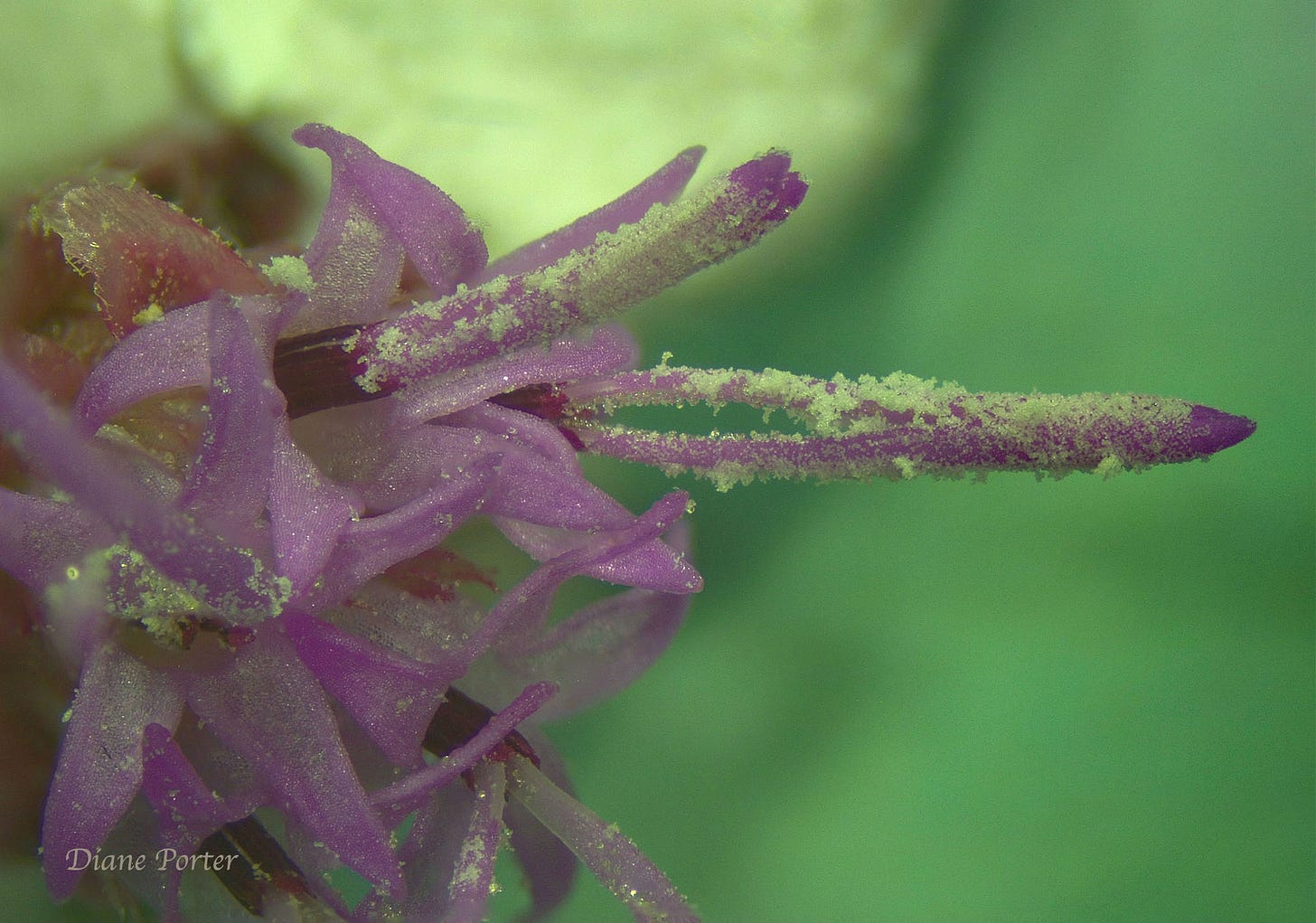

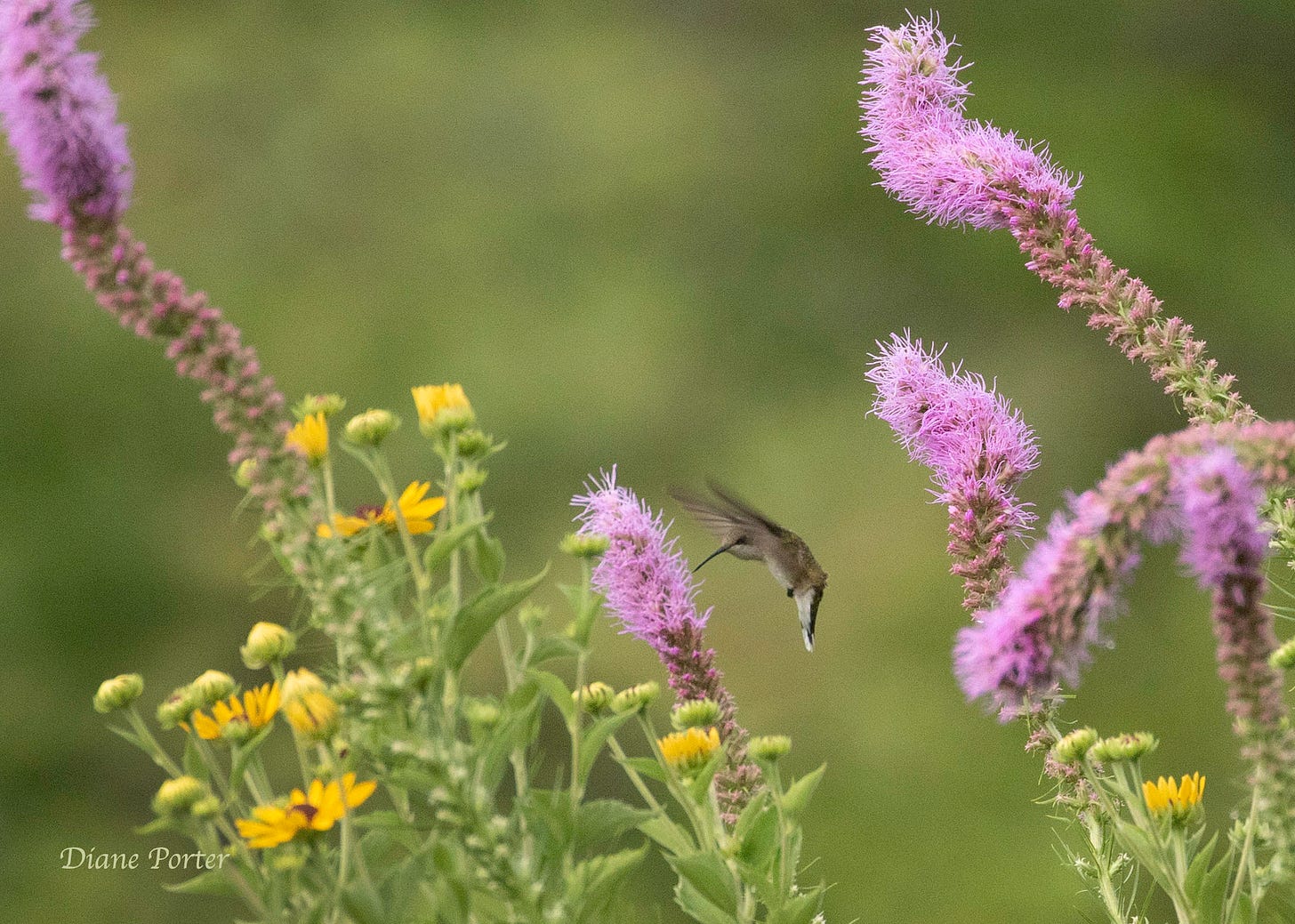











Oh I laughed out loud at your last comment. Wonderful photos. Thank you again.
Thanks! I have a sweet spot in Northeast Georgia. I've been working on it for four years. Where is your garden?